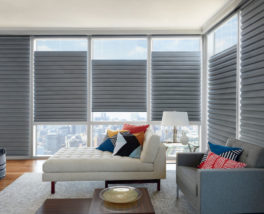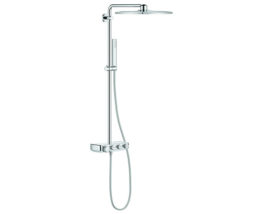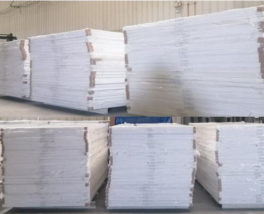
Are you looking for a durable alternative for your linear wood ceilings and sidings? Both beautiful and functional, a spandrel ceiling can be the perfect finish for ceilings, eaves, and shades.
If you’ve been eyeing for a spandrel ceiling and eaves panels to complete your home, here’s everything you need to know:
What are spandrels?
Although commonly known in the Philippines as “spandrels,” another term for them is “soffits” which means “something fixed underneath.” Spandrels can be made from steel, vinyl, aluminum, and wood. However, the most common material used for spandrels in the Philippines is steel – which makes them an economical choice for a ceiling system.
What are the types of spandrels?
- Sizes – both ceiling systems and spandrels usually run around two typical widths – 4 inches and 6 inches.
- Design – for this one, you may choose between plain, ribbed, or ridged depending on your needs and what would look best with your home design.
- Ventilation – there are two types of spandrels you can choose from, either with or without vents. For your entire roofing, however, you may opt to get both with and without vents since they offer a different set of benefits depending on where they are located. While spandrels with vents placed every three plain models guarantee better airflow, they also attract small insects that can pass through the holes.
How do you install a spandrel ceiling?
Installing a spandrel ceiling comes in three easy steps, as enumerated here:
- Step 1: Always check the roof for leaks and damages
- Step 2: For the installation process, shorter spandrels will first need a supporting channel or frame – since this is where these shorter spandrels will be applied to the roof eaves and edges. Such a frame is typically made out of the center and end moldings, supporting the spandrels that will be placed on top of them. While end moldings are screwed together with a facia board, center moldings are usually installed at the ridges.
- Step 3: Start by installing a spandrel between the two end moldings of the frame. Then, apply the succeeding spandrels by lapping them with one another. For spandrels near the center molding, you might need to cut a few pieces for them to fit and cover the remaining space.
Why should you have a spandrel ceiling?
We’ve mentioned how a spandrel ceiling is both functional and visually appealing, but did you know that they can offer more than that? Here are five more advantages of having a spandrel ceiling for your home:
- Practical and easy to install
- You can use it to cover the exposed under surfaces of the exterior overhanging sections of your roof eaves.
- Since it is termite-resistant and less time-consuming to upkeep, you can enjoy low maintenance costs
- Since it also comes with pre-punched, vented designs, it can significantly improve airflow circulation
- If you have wood rafters, a spandrel ceiling prevents mold from forming around the roof
If you’re leaning towards a steel spandrel ceiling, aka the most commonly used material out of all the options we’ve mentioned, you can experience even more benefits, which are the following:
- Customizable – comes with a variety of colors and designs
- Easy to clean – accumulated dust and dirt can be simply rinsed by running water
- Highly durable – because of its metallic properties, it is resistant to moisture
- Non-combustible – nearly fire-resistant in case of exposure to fire
- Popular – widely available from steel roofing suppliers themselves
- Water-resistant – does not easily deteriorate when directly exposed to water
One with both beauty and functionality, it is no surprise how spandrel ceilings are becoming a common choice among homeowners when it comes to their roof eaves and ceiling finishes.



